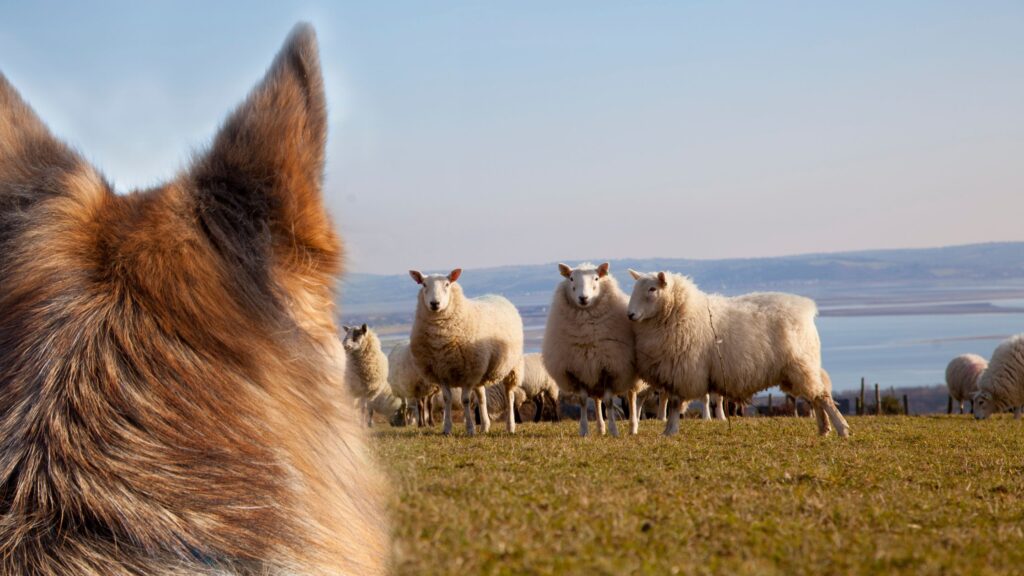
The Himalayan sheep dog, the Bhotia or the Gaddi kutta, plays a crucial role in herding activities in the mountainous regions of the Himalayas. These dogs are highly intelligent and have been bred for centuries to assist their human companions in managing and protecting livestock. Their keen senses and strong instincts make them well-suited for the challenging task of herding sheep in rough and remote terrain. In this blog, we can learn about the role of the Himalayan Sheep Dog in herding in the Himalayan regions.
Skills of a Himalayan sheepdog
One of the key attributes that help the Himalayan sheep dog in herding is their high level of intelligence. These dogs are quick learners and can understand and execute complex commands from their human handlers. They are also adept at problem-solving and can adapt their herding techniques to suit the specific needs of the flock they are working with. This intelligence allows them to effectively manage the movement of the sheep and protect them from predators.
In addition to their intelligence, Himalayan sheepdogs also possess excellent comprehension skills. They can assess the behavior of the sheep and anticipate their movements, allowing them to anticipate and prevent potential problems before they arise. This ability to comprehend the behavior of both the sheep and the surrounding environment is essential for successful herding operations in the rugged and unpredictable mountain terrain of the Himalayas.
Key Roles:
- Herding:
- Guiding Livestock: Himalayan sheepdogs are adept at guiding and managing the movement of livestock. They help shepherds direct the flock to grazing areas and ensure that the animals stay together.
- Preventing Straying: These dogs have a natural instinct to keep the herd intact, preventing individual animals from straying away, which is particularly important in the expansive and often perilous mountain regions.
- Protection:
- Guarding Against Predators: One of the primary roles of the Himalayan Sheep Dog is to protect livestock from predators such as wolves, leopards, and bears. Their imposing presence and alert nature act as deterrents, while their courage and strength enable them to confront threats if necessary.
- Nighttime Vigilance: These dogs are especially valuable during the night, when predators are most active. They remain vigilant, often patrolling the perimeter of the herd to ensure safety.
- Companionship and Assistance:
- Bond with Shepherds: Himalayan Sheep Dogs form strong bonds with their human counterparts, working closely with shepherds and responding well to commands. This bond is essential for effective herding and protection.
- Adaptability: Their ability to adapt to harsh climates and challenging environments makes them indispensable in the Himalayan region. They can endure cold temperatures and navigate through rough terrain, ensuring the safety and management of the flock year-round.
Overall, the role of the Himalayan sheep dog in herding is invaluable. These dogs are not only skilled at managing and protecting livestock, but they also play a vital role in maintaining the harmonious coexistence of humans, animals, and nature in the Himalayan region. Their intelligence and comprehension make them indispensable partners for the farmers and shepherds who rely on them to ensure the well-being of their flocks and the sustainability of their way of life.
Frequently Asked Questions
- What are the other Indian dog breeds used for herding?
Ans: One common breed is the Rajapalayam, a large, muscular dog from Tamil Nadu that, although primarily a guard dog, has also been used for herding purposes. The Mudhol Hound, or Caravan Hound, is another Indian breed used in rural areas for both hunting and herding due to its speed and agility. Lastly, the Bakharwal dog, native to the Kashmir region, is traditionally used by nomadic tribes for herding and protecting livestock in the Himalayan mountains.
- How does a Himalayan sheepdog behave with other dogs?
Ans: The Himalayan sheepdog, also known as the Bhotia, typically exhibits a protective and territorial nature, which can sometimes lead to assertive behavior around unfamiliar dogs. However, when properly socialized from a young age, they can coexist peacefully with other dogs. They are known to be loyal and affectionate towards their pack but may be wary or aloof with new canine acquaintances. Early and consistent socialization is key to ensuring harmonious interactions with other dogs.
- What is the life expectancy of a Himalayan sheepdog?
Ans: The life expectancy of a Himalayan sheepdog, also known as a gaddi kutta, is typically around 10 to 14 years. Some may live even longer with the right diet, regular veterinary checkups, and care. However, their lifespan can be influenced by factors such as genetics, overall health, and living conditions.
- How effective is the Himalayan Sheep Dog in herding livestock in mountainous regions?
Ans: The Himalayan Sheep Dog in herding is highly effective, especially in mountainous regions. Known for its strength, agility, and protective instincts, this breed is well-suited to navigating rough terrains and guarding livestock from predators. Their natural herding ability, combined with their loyalty and endurance, makes the Himalayan Sheep Dog an excellent choice for herding in challenging environments.
